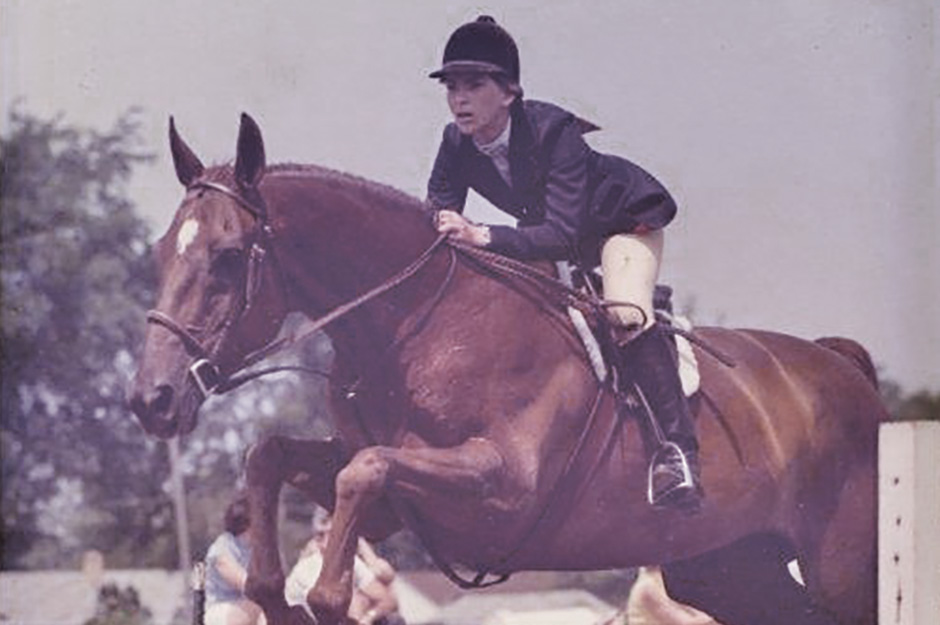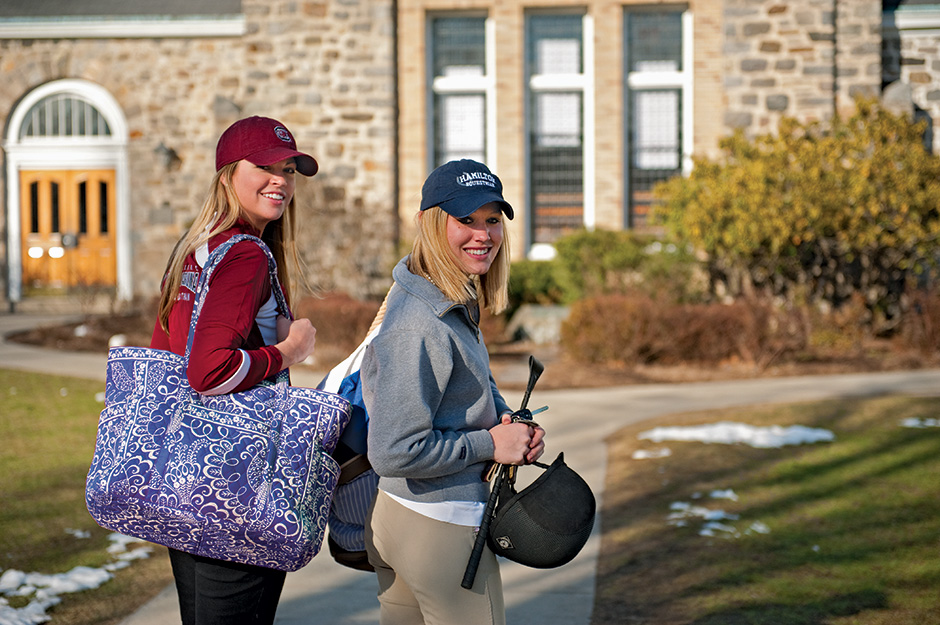For young equestrians, it’s a great time to go to school. And whether you are an English, dressage, eventing, polo or western rider, there’s a school team for you.
(Published Spring 2013)
Since the Intercollegiate Horse Show Association (IHSA) was founded in 1967 by Bob Cacchione, the opportunities for young riders to compete in college have increased exponentially. The IHSA has reached nearly 9,000 riders, and has added many disciplines to its competition format. In 1998, the National Collegiate Athletic Association (NCAA) recognized equestrian as an emerging sport for women, including hunt seat and Western at the Division I and II levels, leading to the creation of the National Collegiate Equestrian Association (NCEA). The Intercollegiate Dressage Association (IDA) began in 1995 as an informal competition among a small group of students and has grown to include schools nationwide. Almost every equestrian sport has found its place on campuses nationwide, from western to polo to eventing. Intercollegiate riding continues to grow and evolve while gaining acknowledgment from the wider equestrian world.
Although choosing the right college should be primarily based on the academics and the right “personal fit,” it is increasingly possible to find equestrian programs of all types at schools across the country, and even to fund part of your education with the help of an equestrian scholarship. While only the best are recruited to NCEA teams, the IHSA and many other programs are available to riders at all levels, and many of these programs also offer scholarships and grants.
Riding at school is different
There are several ways in which intercollegiate programs are differ from the rest of the equestrian world. One aspect that is common to most scholastic riding programs is “catch riding,” or riding a horse that you are unfamiliar with, which levels the playing field. “It is the philosophy of the IHSA that any college student should be able to participate in horse shows regardless of his or her riding ability or financial status. Everyone is important, from the walk-trot rider to the open rider,” says Sue Payne, coach at Smith College. “Allowing riders without much experience to participate alongside some of the best riders in the country, invites a whole new type of rider into the horse world, many of whom continue on to a life in the industry,” adds Michael Dowling, coach at Centenary College, in New Jersey.
Sharing horses, though less expensive, also means a large amount of responsibility and work is required from each school, and each rider. Danny Scheraga, the executive director of the Polo Training Foundation says, “If the companies that interview these kids knew the work that goes into the polo club, they’d hire them in an instant. It’s a tremendous exercise in management and leadership.”
Another part of college riding that sets it apart from other equestrian sports is that it offers the chance to ride as part of a team. Erin Klemyk, Yale’s coach, explains, “Someone is always there cleaning boots, offering to give leg-ups, and providing advice on how to ride certain horses. This feeling of good nature is especially helpful for new riders who lack confidence in their abilities, because everyone around them — even folks from other teams — encourages them. They learn how much fun riding and showing can be. And let’s be honest — riding should be fun.”
Starting young
In recent years, the opportunities available to college students have been extended to students in grades 6 through 12, with the establishment of the Interscholastic Equestrian Association (IEA). This association is modeled directly on the IHSA, and has become something of a feeder program, bolstering the numbers of college riders even higher.
In addition to the wide variety of scholastic riding opportunities, colleges are rapidly expanding their equine studies programs, spawning a new generation of qualified journalists, scientists, craftsmen, and trainers, all helping to grow the horse industry. New technological and business advances born at colleges have led to a modernization in every part of the industry, from tack and nutrition to social media.
As Peter Cashman, Coach of the U.S. Military Academy at West Point IHSA team says, “Riding at college not only offers young riders the chance to continue their passion at school, it’s breathing new life into the entire horse world.”
Two friends, Maggie Fortune (left) and Abby Googel made different riding choices at college: Abby chose IHSA and English at Hamilton College, and Maggie rode NCEA and Western at University of South Carolina.
Olympian Beezie Madden “My intercollegiate riding experience was an exceptionally fun time in my life, filled with great memories. The IHSA has changed a lot since then. Bob and his organization have improved and grown the competitions and the membership year after year. I would encourage all young riders to consider the IHSA as an option for continuing their riding through college.”


